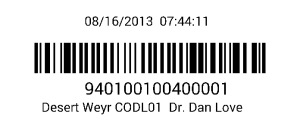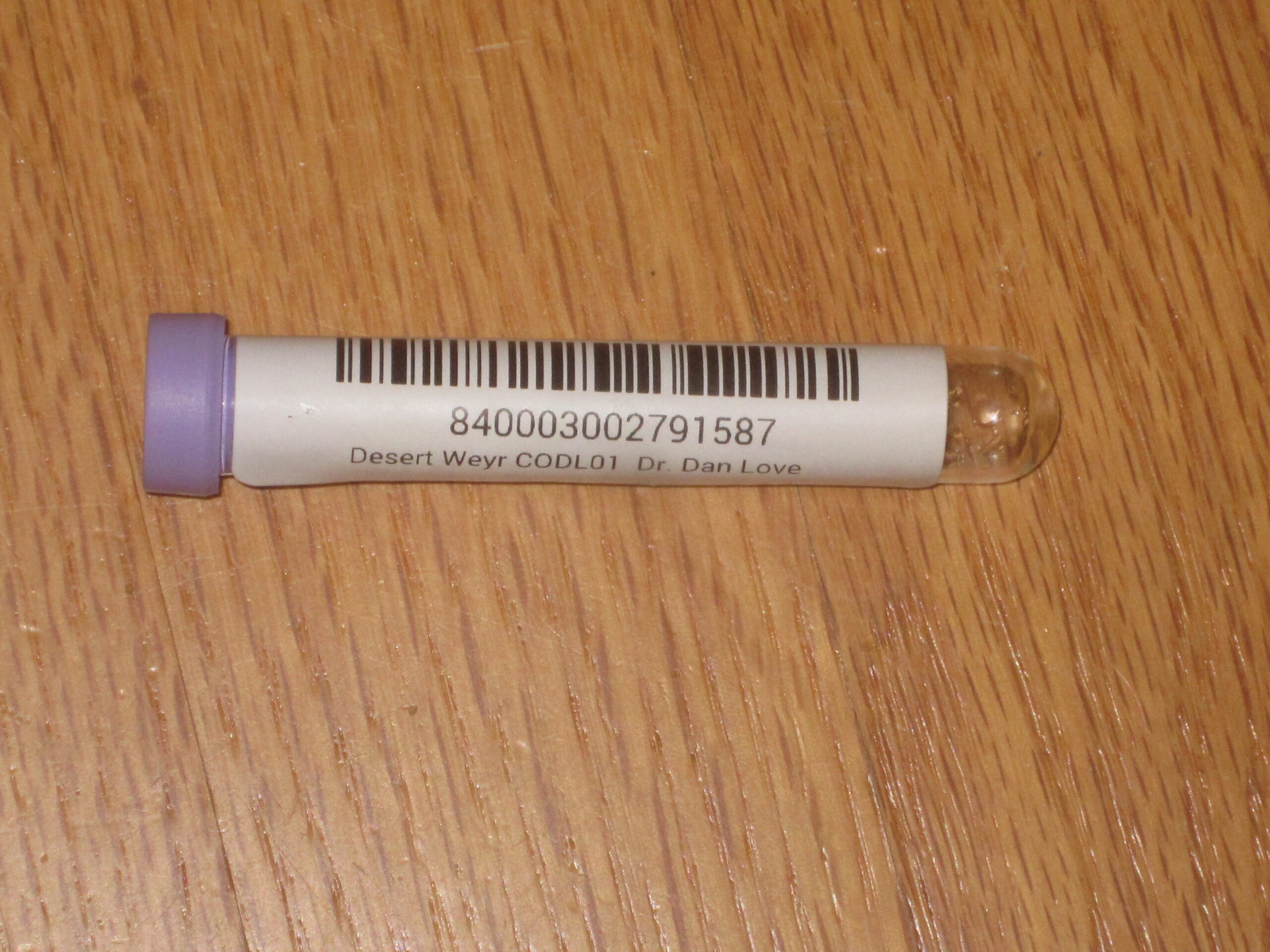Note: this blog post was originally posted on lambtracker.com and has been moved here for preservation. Some information may be outdated.
Coding on the LambTracker® programs is continuing at a fast pace. We currently have several working modules.
The first one is the LambTracker® Print Utility. It’s part of a package that will read an EID tag, then print a barcode label with the tag number, plus a line of text, on a small printer. The printer we’ve been testing with is a Brother QL710W. List price is $139 for the printer, but they’re generally available for under $75 at Amazon.
Print Utility is designed for labeling blood tubes during sample collection. The package consists of two Android applications, one being the Print Utility, which interfaces with the printer. The other is the EID scanning client, which talks to the EID reader via Bluetooth. It generates an image of the barcone, plus your text. Here is an example of the label and its use case.


The main LambTracker® program has also progressed. Our major accomplishments are listed below.
ID Info Database Structure. The database design for storing and retrieving identification information has been defined and verified. A recognized sheep ID can be a federal tag, a farm tag, an ear notch or split, a paint brand, a tattoo, or an electronic tag. The database is designed to facilitate easy addition of new tag and identification types. For each separate ID, there is an addition and removal date. Each ID holds a full history over the life of the sheep.
Sheep Info, Expanded. We have changed how sheep information is stored in the system. Details about a specific sheep – including name, flock name, sex, sire, dam, birthdate, birth type, rearing type, lambing ease, removal reason, death date, and removal date – are now stored separately to make additions simpler. We’ve created space to store whether a sheep was sold, whether it died from predators or old age, or whether it was slaughtered for meat among the removal reasons. Again, the database has been designed to make adding new reasons easy. We’ve not yet addressed how to handle embryo transfer sheep, nor can we document the rearing ewe for a lamb that was grafted to a new mother, but those features are in the works.
Lambing Database Structure. The way we store and retrieve lambing information has changed. Now, each individual lambing event has a sire and dam link, plus information on the number of lambs born, number of lambs weaned, two fields for coding results, a free-text narrative of lambing issues, and a place to indicate ram lambs, ewe lambs, and stillborns. This can be expanded to add data as desired.
ConvertToEID Task. The ConvertToEID task is nearly completed. This new module will allow the searching of a sheep by farm ID, federal ID, or other ID info. Then, you can choose tags to remove, if necessary, plus attach new ones, linking them to the database for that sheep.
During the development of ConvertToEID, we realized that we only wanted to put EIDs on sheep we planned to keep for breeding. None of the animals identified as butcher sheep would need them. We determine butcher status through an extensive individual sheep evaluation. It consists of collecting scores on key characteristics, plus weight, weight gains, birth type, Scrapie genetics, and so on. Sheep are evaluated, then ranked, and the lower-ranked animals are lined up for slaughter. Our current process is paper-based, complex, and difficult to use.
As such, we’ve started implementing a simple EvaluateSheep task, plus its related CreateSheepEvaluation. The user will select from a number of traits to evaluate on a scale of zero to five, with five being best and zero being worst. The user can also evaluate traits with real values, such as scrotal circumference and weight. Based on the user’s selections, an Evaluate screen is generated that allows the user to select sheep based on ID info. Then, a series of selection menus for each trait is displayed. Data entry for real values is allowed via on-screen keyboard input. The sheep is evaluated by an inspector, a judge, or the farmer, and finally, the scores are saved in the database. These data are then correlated to produce a report of the sheep, ranked in order of their final evaluation scores. Since sheep get evaluated multiple times in their lives, we save all of their past evaluation scores. This module is nearly complete, and it will be tested on our own farm through our adult rams, ram lambs, and ewe lambs prior to giving them EID tags.
Lastly, we’re pleased to report that the Shearwell SET tag system has been approved by the USDA as an official ID. We’re waiting for the final physical signatures to be sent back from the UK, but the tags themselves are approved for sheep, goats, pigs, deer, elk, alpaca, and llama. These tags can be purchased as pairs, with one EID and one visual tag with matching numbers. We plan to start next year’s lambs with official EIDs at birth.
All current code, whether working or not, is on GitHub.
